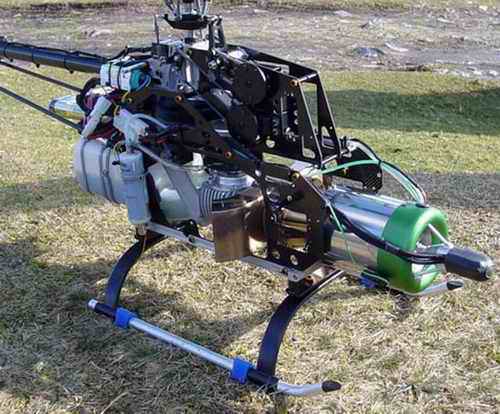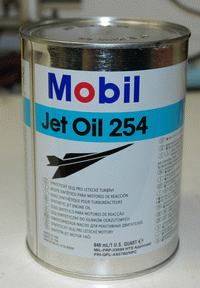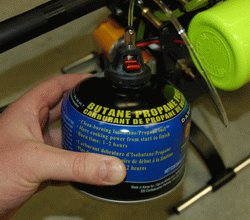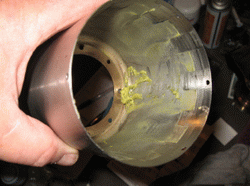How Turbine RC Helicopters Work

The mechanics of how a turbine engine in an RC helicopter works is really quite simple. Air is sucked into the turbine and compressed. Fuel is added to the air and the mixture is ignited. The result? One powerful little heli engine!
When the compressed fuel and air mixture is ignited it expands quickly, and of course raises the temperature of the air. Since there is already more compressed air at the front of the turbine engine, the hot air and fuel mixture is going to take the easiest way out, which is through the back of the engine, creating thrust.

(Single stage turbine engine diagram)
The movement of this hot air and fuel mixture is forced through the back of the engine by the turbine blades. This movement will result in the turbine spinning, which will then cause the compressor to spin by way of a shaft that connects the turbine blades to the compressor blades. The entire process will continue to repeat itself over and over, creating power for your turbine RC helicopter.
The amount of power you get from your turbine engine depends on the fuel/air ratio that you have. The more fuel you add to the air, the quicker the turbine will turn. The quicker the turbine turns, the quicker the engine sucks in air to complete the process.
There are two types of turbine RC helicopter turbine engines for you to choose from, though one only really fits the bill. There is the single state and the 2-stage turbine. The single stage, or direct drive turbine, is the less expensive form of turbine engine used. However, this form of turbine does have some disadvantages. Much of the thrust that is produced is wasted because it is simply pushed out of the engines exhaust nozzle.

(Two stage turbine)
A two-stage turbine engine on the other hand, is much more effective. These are the types of turbine engines that are used on most RC helicopters, and provide a higher level of power to your RC helicopter. There is no thrust wasted with a two-stage turbine. Instead, the thrust that would be wasted with a single stage turbine is used to turn a second set of turbine blades which helps to produce rotational power for your helicopter.
Installing a turbine engine in your RC helicopter is easy, especially if the helicopter you purchase is made for a turbine engine. It is possible however, to also convert a gas or nitro heli to a turbine by way of a conversion kit. While most of the mechanics and controls of a turbine heli are the same as that of a gas or nitro, there are a few parts required by a turbine that are different.

(Turbine installed in RC helicopter frame)
To install a turbine engine into your RC heli, you will also need a Full Authority Digital Engine Control, or FADEC, which is a small computer system that helps to control various functions and monitor your turbine’s performance. You will also need to add an electric fuel pump and valves, an auto start motor and a larger fuel tank. Since many of these additional features will create the need for additional electrical power, you will also have to install several dedicated batteries in addition to your receiver battery.
As with any RC aircraft, there are of course both advantages and disadvantages to flying a turbine RC helicopter. For many pilots that have already owned gas or nitro helicopters, making the switch the a turbine heli is often a nice change of pace that offers a new challenge. On the other hand, those that have difficulties in flying may want to consider waiting a bit for making the switch. A turbine RC helicopter can be quite costly, and if you are apt to crashing, you could be looking at spending a small fortune each time your heli takes a nose dive.
For those pilots that are more seasoned however, switching to a turbine RC heli can actually save money. The basic upkeep of these helicopters is rather minimal, and costs about the same as any large model gas or nitro model. Furthermore, even with turbine engines burning quite a bit of fuel, the fuel is less expensive compared to nitro helicopters, though it is a little more costly then a gas heli.
Turbine RC helicopters are great for those looking to add a little spice to their flying experience. But, as with anything RC, it is important to make sure you know what you are getting into, before you decide to make your purchase.

 That said, even at lower power levels, turbines are still thirsty, generally consuming at least 100 ml of fuel per minute. They use regular kerosene or jet A1 fuel mixed with turbine jet oil. Even at that high consumption rate, fuel costs will be less than nitro fuel, a little more than gas however.
That said, even at lower power levels, turbines are still thirsty, generally consuming at least 100 ml of fuel per minute. They use regular kerosene or jet A1 fuel mixed with turbine jet oil. Even at that high consumption rate, fuel costs will be less than nitro fuel, a little more than gas however. You also have to use small quantities of propane, butane, or a propane/isobutane mix (high performance camp fuel such as Coleman Powermax fuel for example) when starting the turbine (unless you have a "kerostart" system), but these costs are minimal.
You also have to use small quantities of propane, butane, or a propane/isobutane mix (high performance camp fuel such as Coleman Powermax fuel for example) when starting the turbine (unless you have a "kerostart" system), but these costs are minimal.
 Dry chemical extinguishers like those found at the local hardware store are not recommended since the dry chem WILL damage the turbine engine. The picture to the right shows what happens when a dry chem extinguisher is used. The dry powder is sucked into the engine, melts inside the combustion chamber, and will usually at a minimum wreck the turbine section of the engine.
Dry chemical extinguishers like those found at the local hardware store are not recommended since the dry chem WILL damage the turbine engine. The picture to the right shows what happens when a dry chem extinguisher is used. The dry powder is sucked into the engine, melts inside the combustion chamber, and will usually at a minimum wreck the turbine section of the engine.
 This is not to say you can’t perform 3D aerobatics with certain turbine RC helicopters, but I know for a fact crashing is part of 3D – you can’t get away from it... sooner or later the ground always wins. On the other hand, if your skill and
This is not to say you can’t perform 3D aerobatics with certain turbine RC helicopters, but I know for a fact crashing is part of 3D – you can’t get away from it... sooner or later the ground always wins. On the other hand, if your skill and 
 Whenever you place two pieces of metal in water, and apply electricity, the water separates into it's basic molecules, Hydrogen and Oxygen (H2O).
Whenever you place two pieces of metal in water, and apply electricity, the water separates into it's basic molecules, Hydrogen and Oxygen (H2O).

 FREE Yourself from the Greedy Oil Companies and Manipulating Politicians!
FREE Yourself from the Greedy Oil Companies and Manipulating Politicians!




